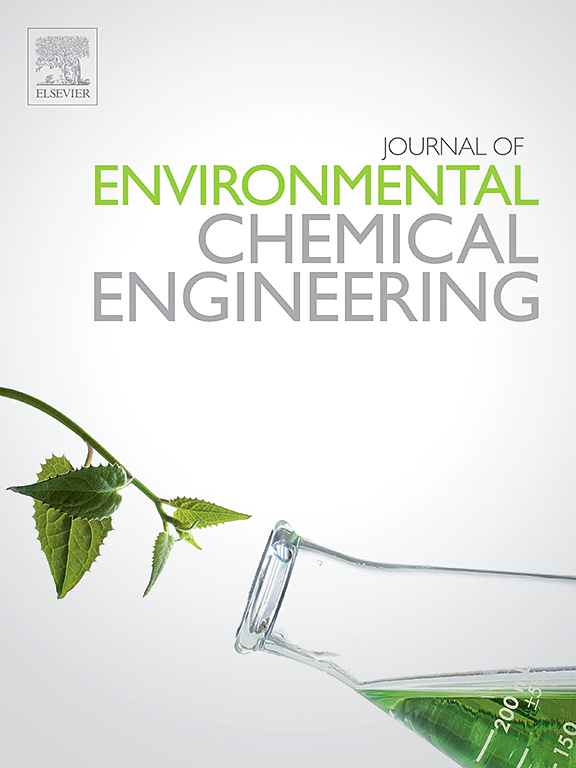碳捕获金属有机框架计算筛选的最新进展
IF 7.2
2区 工程技术
Q1 ENGINEERING, CHEMICAL
引用次数: 0
摘要
由于其高储气能力、选择性和CO2的回收,吸附被认为是二氧化碳捕获的潜在解决方案。吸附剂的选择对碳捕集装置的设计和开发有重要影响。由于其大表面积、适应性强的孔隙结构、设计通用性和CO2选择性,金属有机框架(mof)在该领域引起了广泛的兴趣。由于其高可调性和可定制的结构,在实验和计算上合成了约100万个mof,并在诸如Computational Ready (CoRE),基于拓扑的晶体构造器(ToBaCCo),假设mof (hmof),硅和Zr mof等数据库中报告。然而,从数以百万计的结构中对mof进行实验测试,以确定最适合二氧化碳捕获的mof是不可实现的。为了克服这一挑战,采用高通量筛选(HTS)技术,根据其吸附性能特征(如目标吸附物的选择性、工作容量、可再生性、吸附剂性能评分等)对数据集进行分离,并通过计算测量。虽然高通量筛选减轻了实验工作量,但由各种模拟工具和密度泛函理论组成的计算技术在计算上是昂贵的。计算能力的快速增长和数据驱动建模技术的进步,如机器学习,可以极大地减少HTS的时间和劳动。这种数据驱动的筛选技术需要物理、化学和吸附特性来开发准确的模型来预测碳捕获性能。该技术支持预测建模,优化MOF设计,并提供对影响参数的可解释性。本文章由计算机程序翻译,如有差异,请以英文原文为准。
Recent advances in computational screening of metal-organic frameworks for carbon capture
Adsorption is regarded as a potential solution for carbon dioxide (CO2) capture due to its high gas storage capacities, selectivity, and recovery of CO2. The design and development of the carbon capture unit are significantly influenced by the choice of adsorbent. Due to their large surface area, adaptable pore architectures, design versatility, and CO2 selectivity, metal-organic frameworks (MOFs) have drawn a lot of interest in this sector. Due to their high tunability and customizable structures, ∼one million MOFs are experimentally and computationally synthesized and reported in databases such as Computational Ready (CoRE), topologically based crystal constructor (ToBaCCo), hypothetical MOFs (hMOFs), in silico, and Zr MOFs, etc. However, testing MOFs experimentally from the millions of structures for the identification of top-performing MOFs for CO2 capture is infeasible. To overcome this challenge, a high-throughput screening (HTS) technique is applied to segregate datasets based on their adsorption performance characteristics, such as selectivity of target adsorbate, working capacity, regenerability, adsorbent performance score, etc, measured computationally. Although high-throughput screening alleviates the experimental effort, computational techniques consisting of various simulation tools and density functional theory are expensive computationally. Rapid growth in computational power and advancement in data-driven modeling techniques, such as machine learning, could mitigate the HTS time and labor enormously. This data-driven screening technique requires the physical, chemical, and adsorption characteristics to develop an accurate model to predict the carbon capture performance. This technique enables predictive modeling, optimizes the MOF design, and provides interpretability towards the affecting parameters.
求助全文
通过发布文献求助,成功后即可免费获取论文全文。
去求助
来源期刊

Journal of Environmental Chemical Engineering
Environmental Science-Pollution
CiteScore
11.40
自引率
6.50%
发文量
2017
审稿时长
27 days
期刊介绍:
The Journal of Environmental Chemical Engineering (JECE) serves as a platform for the dissemination of original and innovative research focusing on the advancement of environmentally-friendly, sustainable technologies. JECE emphasizes the transition towards a carbon-neutral circular economy and a self-sufficient bio-based economy. Topics covered include soil, water, wastewater, and air decontamination; pollution monitoring, prevention, and control; advanced analytics, sensors, impact and risk assessment methodologies in environmental chemical engineering; resource recovery (water, nutrients, materials, energy); industrial ecology; valorization of waste streams; waste management (including e-waste); climate-water-energy-food nexus; novel materials for environmental, chemical, and energy applications; sustainability and environmental safety; water digitalization, water data science, and machine learning; process integration and intensification; recent developments in green chemistry for synthesis, catalysis, and energy; and original research on contaminants of emerging concern, persistent chemicals, and priority substances, including microplastics, nanoplastics, nanomaterials, micropollutants, antimicrobial resistance genes, and emerging pathogens (viruses, bacteria, parasites) of environmental significance.
 求助内容:
求助内容: 应助结果提醒方式:
应助结果提醒方式:


